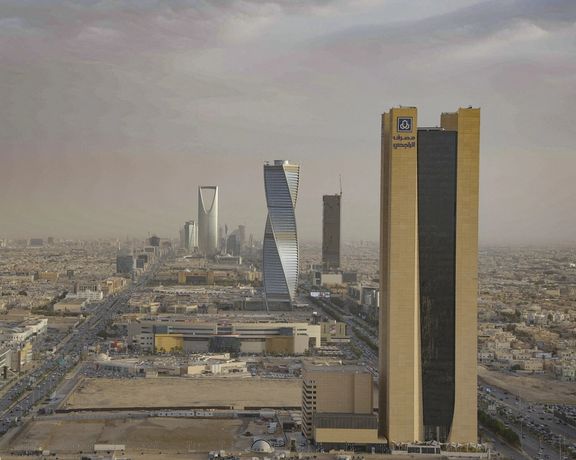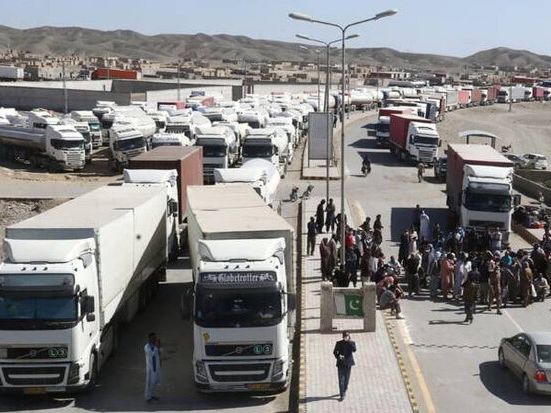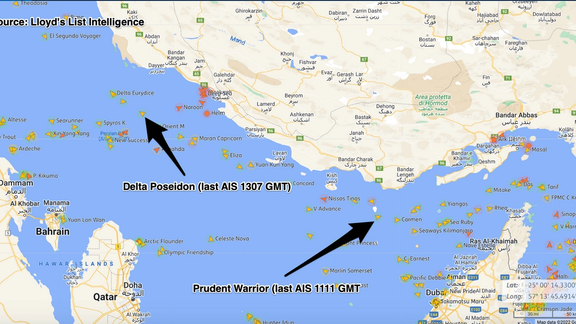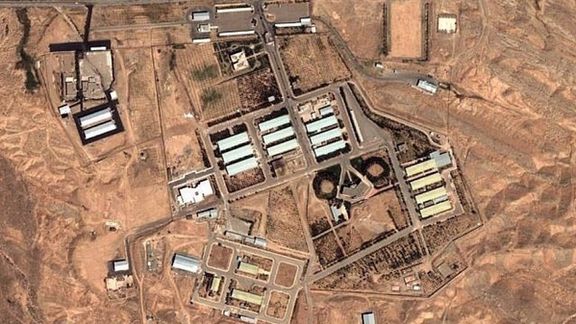Israeli Official Visits Riyadh To Discuss Normalization, Iran Challenge

A senior Israeli official has visited Saudi Arabia ahead of United States President Joe Biden’s scheduled visit to the region, Israel’s Channel 12 said Friday.

A senior Israeli official has visited Saudi Arabia ahead of United States President Joe Biden’s scheduled visit to the region, Israel’s Channel 12 said Friday.
The sides discussed security, with their interests further aligned in recent years over Iran as Jerusalem and Riyadh prepare to normalize relations, the network said, with the senior Israeli official warmly received at a palace in the Saudi capital.
The US National Security Council Middle East coordinator, Brett McGurk, and State Department energy envoy Amos Hochstein traveled to Saudi Arabia earlier this week for talks that included global energy supplies, Iran, and other regional issues.
Axios reported this week that the Biden administration had been mediating between Saudi Arabia, Israel, and Egypt on transferring two islands – Tiran and Sanafir – in the Red Sea from Egyptian to Saudi sovereignty with Israeli “consent.” If successful, this could be a first step to ‘normalizing’ Saudi-Israel relations.
Iran's Supreme Leader Ali Khamenei and several Iranian military commanders and politicians have cautioned Arab states against following the United Arab Emirates and Bahrain in ‘normalizing’ relations with Israel. The Arab League position, dating to 2002 and proposed by Saudi Arabia, is that Arab states should not do so until Israel recognizes a Palestinian state in the territories it has militarily occupied since 1967.
Iran and Saudi relations have thawed in recent months with talks mediated by Iraq. Turkish President Recep Erdogan also recently visited Saudi Arabia.

Despite the meeting between their foreign ministers in Switzerland Thursday, tensions between Iran and Pakistan appear to be playing out at the border.
Javad Hedayati, director-general of the Transit and International Affairs Department of Iran Road Maintenance and Transportation Organization (RMTO), told Shargh daily Friday that Pakistan had intensified barriers facing Iranian truckers.“It has been about a month since Iranian drivers are facing new restrictions…and the flow of goods…has almost stopped, while Pakistani drivers are coming to Iran as usual,” he said.
Pakistan imposed heavy tariffs on Iranian truckers in November and was unwilling to issue visas for Iranian drivers, forcing them to unload their cargoes at the border and pass them to Pakistani truckers, Hedayati said: “This has led to a very long unloading and reloading process and…[to] a line of trucks at the border as well as a lot of damage to the goods,” he said.
"Pakistani is making various excuses," said Mahmoud Tohidast, board member of the Iran-Pakistan Joint Chamber of Commerce, who put bilateral trade at $1.3 billion despite difficulties.
Thursday’s meeting on the sidelines of the World Economic Forum in Davos between Iran’s foreign minister Hossein Amir-Abdollahian and Pakistani foreign minister Bilawal Bhutto Zardari led to assurances of co-operation.
But relations strained recently over Pakistani allegations of Iranian involvement with a militant separatist group. With a $90 billion external debt, Pakistan also faces acute economic problems and may want to restrict Iranian goods made more competitive by the falling rial.

An Afghan cleric sent to Iran as a diplomat cannot find housing for his 15-member family of three wives and 12 children, Afghanistan International TV reported Friday.
The man, Mufti Alim Noorani, with no diplomatic experience or general education has been appointed as third secretary of Afghan embassy in Tehran.
Afghanistan International published copy of a letter the embassy sent to Kabul, saying that none of the mission’s housing facilities has enough space for the 16-member family. The embassy has several residences in Elahiyeh district of Tehran, an affluent area.
In the letter the embassy requests $2,300 a month for renting an appropriate residence for Noorani, which together with real estate fees would total $28,750 for the year.
Since the Taliban seized power last August, poverty and hunger have gripped Afghanistan, with international organizations issuing warnings and other countries discussing how to aid the isolated government.
The United Nations has said that 98 percent of the population is under-nourished, while most Western assistance has been stopped after the Taliban takeover.
The new rulers, who used widespread violence against civilians to weaken the elected government and come to power, had promised to form an inclusive government, but so far all important posts have been given to trusted members of the secretive group.

Iran’s Revolutionary Guard is revamping a massive ship near the strategic Strait of Hormuz, providing the IRGC navy with a floating base to run its fleet of small fast boats designed to counter the US Navy.
Satellite photos obtained by The Associated Press on Friday indicate the completion of the construction of the Shahid Mahdavi support ship, which appears to be a retrofit of an Iranian cargo ship known as the Sarvin.
“They are looking beyond the Persian Gulf and into the blue waters of the Arabian Sea and the Red Sea and the northern Indian Ocean,” Farzin Nadimi, an associate fellow at the Washington Institute for Near-East Policy who studies the Iranian military, told AP.
The Sarvin arrived off Bandar Abbas in late July last year and then switched off its transponders. By Jan. 29, satellite photos analyzed by the AP showed the vessel at drydock at Shahid Darvishi Marine Industries, a company associated with Iran’s Defense Ministry west of Bandar Abbas.
Last Saturday, the IRGC-affiliated Fars News agency said the Guard’s navy was due to commission ‘Shahid Mahdavi’ as a forward base ship that will be among Iran’s largest vessels.
The ship was named in honor of Nader Mahdavi, one of seven IRGC personnel killed in an engagement with the United States navy in October 1987 during the Iran-Iraq war.
Aurora Intel, defense analysts, said the ship – formerly called Savin, Sarita, Dandle, Twelfth Ocean, Iran Esfahan – is a 22-year-old container vessel with a nominal capacity of 3,300 20-foot equivalent units (TEUs).

Iran’s Revolutionary Guard has seized two Greek oil tankers in helicopter-launched raids in the Persian Gulf about a week after the confiscation of Iranian oil from a tanker held off the Greek coast and its transfer to the US.
“The Revolutionary Guards Navy today (Friday) seized two Greek oil tankers for violations they have carried out in the waters of the Persian Gulf,” the IRGC said in a statement on Friday, shortly after Nour News -- a website affiliated to the secretary of Iran's Supreme National Security Council (SNSC), Ali Shamkhani -- warned of "punitive action" against Athens due to the seizure. The statement gave no further details about the alleged violations.
The Greek tankers are Delta Poseidon and Prudent Warrior, and were captured near Asalouyeh off the coasts of Iran’s Bushehr Province and the Hendurabi island near Bandar Lengeh in Hormozgan province, respectively.
Nour News said on Twitter, "Following the seizure of an Iranian tanker by the Greek government and the transfer of its oil to the Americans, Iran has decided to take punitive action against Greece."
The US Navy’s Mideast-based 5th Fleet said it was “looking into” reports about the seizure of the Greek oil tankers, with Commander Timothy Hawkins telling The Associated Press that the Navy was continuing to investigate, without further elaboration.
A US defense official, speaking on condition of anonymity, told the Washington Post that the two ships had apparently “come close to — but not in — Iranian territorial waters before the seizure,” adding that the ships also had turned off their tracking devices and neither had issued a mayday or a call for help.
In total, nine Greek nationals have been taken captive by the IRGC following the seizure of the two tankers.

Greek authorities last month impounded the Iranian-flagged Pegas, with 19 Russian crew members on board, near the coast of the southern island of Evia due to EU sanctions. The United States later confiscated the Iranian oil cargo held onboard and chartered a tanker owned by Dynacom Tankers Management to send it to the United States.
The Pegas was later released because of confusion about the sanctions over its owners. It was unclear whether the cargo was impounded because it was Iranian oil or due to the sanctions on the tanker over its Russian links as the two countries face separate US sanctions.
The aframax Lana, formerly named Pegas, was detained on April 15 by Greek authorities and was identified as the Russian-flagged Pegas and the assumption at the time was that it was laden with Russian crude.
The Pegas was among five vessels designated by Washington on February 22 -- two days before Russia's invasion of Ukraine -- for sanctions against Promsvyazbank, a bank viewed as critical to Russia's defense sector.
Iran's Ports and Maritime Organization said last week that the tanker had sought refuge along the Greek coast after experiencing technical problems and poor weather. It called the seizure of its cargo "a clear example of piracy".
Earlier on Friday, the Iranian foreign ministry summoned a Swiss diplomat in Tehran to protest against the Pegas oil seizure. Switzerland represents US interests after relations were severed between Tehran and Washington in 1980.
"The Islamic Republic expressed its deep concern over the US government's continued violation of international laws and international maritime conventions," state media quoted the foreign ministry as saying.
On Wednesday, the United States imposed sanctions on what it described a Russian-backed oil smuggling and money laundering network for Iran's Revolutionary Guards' Quds Force.
In 2019, Iran seized a British tanker near the Strait of Hormuz for alleged maritime violations two weeks after British forces detained an Iranian tanker near Gibraltar, accusing it of shipping oil to Syria in violation of European Union sanctions.

Suicide drones were used to target an Iranian military research facility on Wednesday, the New York Times reported Friday, citing three Iranian sources and a US official.
The NYT says its sources believe quadcopter suicide drones were used in the attack. Given the relatively smaller size of these drones it is not clear if they were launched from inside Iran or a forward base near its borders.
Iranian media on Thursday had reported a fire in Parchin military complex, near the capital Tehran, saying that a young engineer was killed at a defense ministry center developing nuclear, missile and drome technologies.
Although no one has taken responsibility, Israel is strongly suspected of conducting multiple sabotage attacks, and possibly drone strikes, against targets in Iran, and even the assassination of its top nuclear operative in November 2020.
Israeli media attributed one particular striketo an Israeli aerial attack, which reportedly destroyed hundreds of drones at an airbase belonging to the Revolutionary Guard in the Iranian province of Kermanshah in February.
Iran has made notable advances in the past few years in producing effective drones that have been widely used by its proxies throughout the region against Saudi Arabia, in Iraq and against a US base in Syria.
Just three days before this attack, an Iranian Qods (Quds) Force colonel was killed outside his home in Tehran by two gunmen on motorcycle. He was reportedly involved in clandestine terror operations against Israel, which has apparently told the United States it was responsible for the killing.